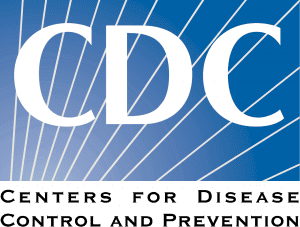- Comparison of Protection against Mpox following mRNA or Modified Vaccinia Ankara Vaccination in Nonhuman Primates
Researchers used a clade I MPXV Zaire 1979 (Z79) MPXV NHP challenge model to assess the protective efficacy of an mRNA-lipid nanoparticle (LNP) vaccine, mRNA-1769, expressing optimized versions of the four MPXV antigens of interest (A29, A35, B6, and M1) compared with MVA. Unlike the replication-deficient JYNNEOS vaccine, which expresses all viral antigens, protein- and nucleic-acid-based vaccines focus on a subset of viral surface antigens that are highly conserved across all old-world Orthopoxviruses. Animals receiving MVA and mRNA-1679 were completely protected from lethality of MPXV Z79 infection, while five out of six NHPs in the PBS group succumbed to infection. MPXV lesion numbers were used as a critical metric of disease burden and morbidity, increasing substantially in the PBS control group during the course of infection with a peak average lesion count of 1,448. MVA-immunized animals experienced reduced lesion counts relative to control animals with an average maximum lesion count of 607 for the group. By contrast, mRNA-immunized animals showed the fewest lesions per NHP across the duration of infection with a peak average lesion count of 54. The duration of disease was also measured as a function of lesion onset to resolution and charted for each individual animal (Figure 1E). The duration of disease was reduced by over 10 days when comparing MVA-immunized animals to those receiving the mRNA vaccine.
- Association Between SARS-CoV-2 Viral Load and COVID-19 Vaccination in 4 Phase 3 Trials
For this analysis four randomized, placebo-controlled, phase 3 COVID-19 vaccine efficacy trials (CoVPN3001-3004), including 136,382 participants in total who got—Moderna (mRNA-1273, two doses, NCT04470427), Janssen (Ad26.COV2.S, one dose, NCT04505722), AstraZeneca (AZD1222, two doses, NCT04516746), Novavax (NVX-COV2373, two doses, NCT04611802)—were included. While the primary purpose of vaccination is to reduce morbidity and mortality for the individual who receives it, reducing onward transmission has important benefits for decreasing the risk of morbidity and mortality for individuals who are not eligible for vaccination or who do not mount protective immune responses, and for vaccine advocacy. Here they document reductions in SARS-CoV-2 VL at COVID-19 diagnosis within a median of two-to-three months following last vaccination for multiple vaccine platforms
- Health outcomes 3 months and 6 months after molnupiravir treatment for COVID-19 for people at higher risk in the community (PANORAMIC): a randomised controlled trial
Analysis from the results of extended follow-up from the PANORAMIC trial, a randomized controlled trial to evaluate the effects of early antiviral therapy on long-term health outcomes at three months and six months after randomization. The PANORAMIC trial is a multicenter, primary care, open-label, multi-arm, prospective randomized controlled trial conducted in the UK. Participants were eligible if aged at least 50 years, or at least 18 years with a comorbidity, and unwell five days or less with confirmed COVID-19 in the community. Participants were randomly assigned to the usual care group or molnupiravir group plus usual care (800 mg twice a day for five days), which was stratified by age (<50 years or ≥50 years) and vaccination status. The results of a pre-specified analysis show that people who were randomly assigned to molnupiravir during the acute phase of COVID-19 had better outcomes at three months and six months than those randomly assigned to usual care, including better self-reported wellbeing, fewer and less severe COVID-19 associated symptoms, less health care utilisation, less absenteeism from work or study, and improved quality of life. The conclusion based on this data is that “In a vaccinated population, people treated with early antiviral therapy (in this case molnupiravir) for acute COVID-19 felt better, experienced fewer and less severe COVID-19 associated symptoms, accessed health care less often, and took less time off work at 6 months.”
- Adult Outpatients with Long COVID Infected with SARS-CoV-2 Omicron Variant. Part 1: Oral Microbiota Alterations
These results are from a prospective nested case-control study that evaluated the differences in oral microbiota in individuals with and without Long COVID (Symptomatic and Asymptomatic groups), which were assessed by 16S rRNA sequencing on tongue coating samples. One-hundred-and-eight patients were included (n=54 Symptomatic group). The Symptomatic group had higher diversity and microbial dysbiosis with increased diversity and relative abundance of pathogenic bacteria. Marker bacteria (c__Campylobacterota, o__Coriobacteriales, o__Pseudomonadales, and o__Campylobacterales) were associated with Long COVID. There were distinct variations in oral microbiota between COVID-19 patients with and without Long COVID.
Situation Dashboards

World Health Organization (WHO)
Novel Coronavirus (COVID-19) Situation from World Health Organization (WHO)

Johns Hopkins University (JHU)
Coronavirus COVID-19 Global Cases by the Center for Systems Science and Engineering (CSSE) at JHU

COVID-19 in US and Canada
1Point3Acres Real-Time Coronavirus (COVID-19) Updates in US and Canada with Credible Sources

Genomic Epidemiology COVID-19
Genomic Epidemiology of (COVID-19) Maintained by the Nextstrain team, enabled by data from GISAID.






